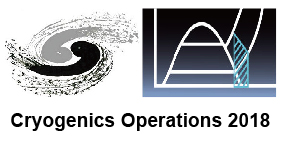Speaker
Description
Summary
A neutrino superconducting beam line in J-PARC, which transports 30 GeV proton beam from a main ring to a neutrino production target, has operated since 2009 with an integrated time of about 40000 hours. The power of the proton beam increased gradually from 20 kW in 2009 to 485 kW now. During a design study on the superconducting magnet system, it was predicted that helium-3, which is slightly included in helium supply, becomes tritium by radio activation from the proton beam. So inspections, whether the refrigerant helium having tritium or not, have been carried out during worming up beyond 25 K. No tritium could be detected until 2011, when the beam power had been lower than 200 kW, but a few ten Bq/ℓ tritium (Hydrogen - Tritium type) has been detected since end of 2012 beam time. Despite that the detected values are extremely smaller than allowable HT value of 7000 Bq/ℓ for human health according to relevant regulations, some ways of maintenance, which need discharge helium, became burdensome, because the radiation safety manager restricts helium discharge or diffusion without radiation check and require air at working area to be exhausted into a chimney stack line including radiation monitor.
We would like to hear ways of maintenance under the same situation in other facilities.

